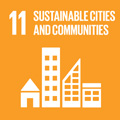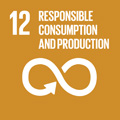- Docente: Francesca Valenti
- Credits: 6
- SSD: AGR/09
- Language: Italian
- Moduli: Francesca Valenti (Modulo Mod 1) Massimiliano Varani (Modulo Mod 2)
- Teaching Mode: In-person learning (entirely or partially) (Modulo Mod 1); In-person learning (entirely or partially) (Modulo Mod 2)
- Campus: Bologna
- Corso: Second cycle degree programme (LM) in International Horticultural Science (cod. 8883)
-
from Feb 17, 2025 to Mar 26, 2025
-
from Mar 31, 2025 to May 12, 2025
Learning outcomes
The course will provide knowledge on safety requirements adopted in the European countries for horticultural equipment. Key concepts on the safe use of tractors and agricultural equipment in view of the economic and environmental sustainability. Crop protection equipment for a sustainable horticulture.
Course contents
Module 1:
- Sustainability: Definition, evolution of the concept of sustainability. The Triple bottom line. MDGs and SDGs. Environmental sustainability and different concepts of sustainability. Linear vs Circular economy: sustainability strategies: Farm to Fork.
- Precision Agriculture: Definition, main goals and SDGs. Farming & agriculture evolution, PA in Italy. Tools and technologies. Climate changes and the effects on agriculture. Agriculture 4.0.
- Sustainability Indicators: Metrics, sustainability measurements. Environmental, economic and social metrics, energy sustainability indicators: definitions, application and limits.
- LCA: Life Cycle Assessment: definition, possible use, potential and challenges. Principles and methods of life cycle thinking and life-cycle assessment (LCA) with specific reference to agricultural field. Standard procedure: the 4 common stages of LCA: (i) Goal and Scope definition: the choice of the functional unit, definition of system boundaries and impact allocation methods; (ii) Life Cycle Inventory Analysis: primary data and their survey, secondary data - databases and estimation models; (iii) Life Cycle Impact Assessment: Inventory conversion into environmental impact, characterization factors, normalization, sensitivity analysis; (iv) Interpretation: detection of the critical points; analysis of suitable alternatives to reduce the environmental impact. Type of LCA.
- LCA software and tools: Sofware for LCA: scope and uses. Type of software and tools, and their comparison. Focus on SimaPro software.
- LCA indicators: indices and indicators.Midpoint and Endpoint. Example of midpoint indicator. Example of endpoint indicator.
- Example of LCA studies.
Module 2:
- Tractor classification according to international standardization. Tractors and power units: main features of pedestrian controlled, ride-on garden tractors, narrow-track tractors for orchards and vineyards.
- Tillage machines adopted in horticulture.
- Tractors fitment to increase the safety of the operators with respect to rollover, falling objects, vibrations, noise level. Practice on the selection of tractor and agricultural implement for a given operation.
- Horticultural harvesting machines. Sprayers and spreaders: parts, controls, settings and calibration. Protection of the operator from hazardous substances in spray application.
- Seed drills, planters, transplanters: parts, controls, settings and calibration.
- Machinery and methods for precision and digital farming.
- Educational visits to machinery manufacturer and dedicated sector fairs (MACFRUT)
Readings/Bibliography
Lecture notes made available by professors
Hawker, M. F. J., & Keenlyside, J. F. (1985). Horticultural machinery (No. Ed. 3). Longman.
Srivastava, A. K., Goering, C. E., Rohrbach, R. P., & Buckmaster, D. R. (1993). Engineering principles of agricultural machines.
BODRIA, Luigi; PELLIZZI, Giuseppe; PICCAROLO, Pietro. Meccanica e meccanizzazione agricola. Edagricole New Business Media, 2018.
Gian Luca Baldo, Massimo Marino, Stefano Rossi. Analisi del ciclo di vita LCA- Gli strumenti per la progettazione sostenibile di materiali, prodotti e processi. Manuali di progettazione sostenibile - Edizioni Ambiente 2008 - ISBN 9788889014820.
Teaching methods
Lectures in class.
During the course, field visits and/or seminars will be planned and will be held by experts in the field of agricultural machinery.
Assessment methods
The assessment consists of an oral exam in which students will be asked three questions. Students have the option to prepare a presentation covering both modules. The exam typically lasts around 30 minutes.
Teaching tools
Lectures in class, and laboratory of water, energy and soil mechanics.
Office hours
See the website of Francesca Valenti
See the website of Massimiliano Varani
SDGs




This teaching activity contributes to the achievement of the Sustainable Development Goals of the UN 2030 Agenda.
